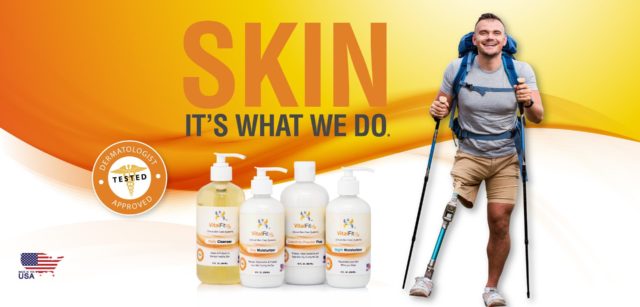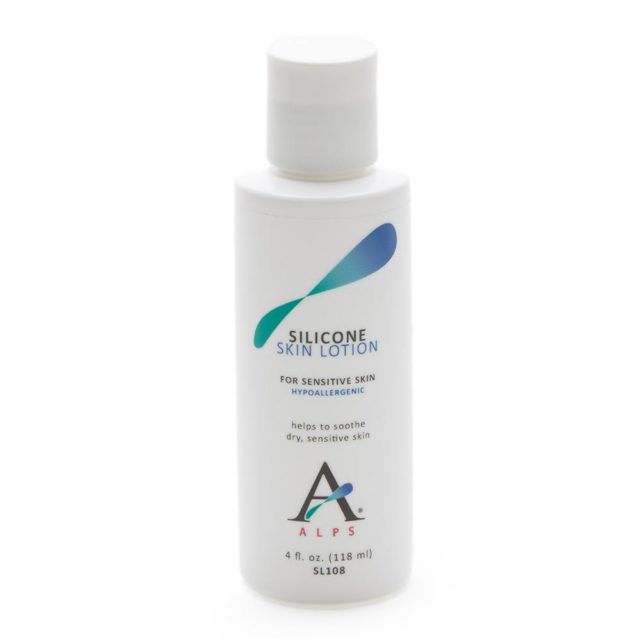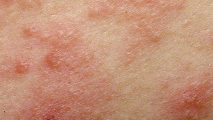Disclaimer: Please spot check or check with your physician prior to using these products. These are only recommendations and possible solutions. Try at your own risk.
1.Dry, flaky skin
Possible Cause(s): Dry skin could be caused by the weather, an irritating product or fabric, or possibly your daily routine (especially if that routine includes very hot showers).
Possible Solution(s): To relieve itchy, dry skin, add a skin-nourishing moisturizer to your daily skin care routine. A thick, creamy formula will soften the skin, keeping it from cracking and drying out again. We suggest you check out VitalFitSR, their product is formulated with amputees in mind. In the mean time you could wear a “liner liner” which is a thin one ply cotton stocking over the area and under the liner to protect your skin.
Link provided below:
https://vitalfitsr.com/

2. Skin irritation on the thigh
Possible Cause(s): The top edge of the gel liner and/or sleeve is pulling on the skin of your thigh. Your skin could also be sensitive to the material of the liner.
Possible Solution(s): Apply a thin layer of vaseline or anti-itch cream over the area of your thigh where the irritation is occuring. Roll your prosthetic liner and suspension sleeve on instead of pulling them on.
Link provided below:
Amazon.com: StingEze Original Insect Bite Itch Relief Dauber, 0.5 Ounce, Black (3310) : Liberty Mountain Sports: Health & Household

3. Skin irritation on your knee cap
Possible Cause(s): The prosthetic liner and/or BK sleeve is pulled too taut over your knee. Or, if redness is occurring along the bottom third of your knee cap, it could be caused by volume loss in your limb.
Possible Solution(s): Use an anti-chafing cream or hypoallergenic silicone lubricant oil along your knee cap to help your prosthetic liner or below-the-knee sleeve glide on easily.
Excessive redness along the bottom third of your knee cap is typically the result of insufficient prosthetic socks. To manage fluctuations in limb volume, start with a one ply or filler sock and continue adding ply until your prosthetic socket fit is comfortably snug and your knee cap is sitting in the proper location above the MTP bar. If the top of your prosthesis feels snug but the distal end is loose, you may want to consider using a half sock to accommodate volume loss along the bottom half of your prosthetic socket.

4. Excessive sweating
Possible Cause(s): Amputees have smaller overall skin surface area, which affects the body’s ability to cool itself, therefore you sweat more in response to physical exertion. Additionally, your limb is under layers of materials, like prosthetic liners, and prosthetic socks, which don’t let cool air reach the skin underneath.
Possible Solution(s): While you can’t totally eliminate perspiration, you can invest in a good antiperspirant and sweat control textiles, like a prosthetic sheath to wick away moisture. Socks with silver are said to be antimicrobial, that might help wick away moisture and prevent excessive bacteria buildup. If these remedies don’t work, you can consider medical options like Botox injections administered by your Physician. Always check in with your physician prior to doing any sort of medical treatment.

5. A skin rash that prickles (heat rash)
Possible Cause(s): Heat rash is caused by sweat trapped in your pores and disrupting the body’s regular cooling off activity. A rash tends to appear where skin rubs against skin, such as in skin groin and behind the knees.
Possible Solution(s): The best treatment is to dry off, cool off, and avoid friction on the skin by wearing loose, light weight clothing and using an anti-chafing prosthetic product.
6. Contact Dermatitis (red skin, skin bumps, blisters, scales, crusts, or sores)
Possible Cause(s): Contact Dermatitis is a skin rash often caused by an allergic reaction. It may also be brought on by contact with a substance (detergent, skin care product) or material that irritates the skin. Left untreated, dermatitis could lead to chronic inflammation, cellular damage, or cancer.
Possible Solution(s): Cleanse first, then apply anti-itch lotion, barrier cream, and/or topical steroids to soothe the skin. Helpful products like hydrocortisone and zinc oxide can be bought over-the-counter (OTC).
If some component of your prosthesis or skin care routine is causing the allergic reaction, you should stop the material or the product as soon as possible. Figure out what’s causing the reaction through process of elimination. Once you know the source of the irritation and remove it, the problem will most likely go away.
The issue can also arise due to lack of hygiene, always remember to wash your liners everyday with a mild soap, you could use Dawn dishwashing soap. And wash your liners and suspension sleeves at least once a week with a water and rubbing alcohol mixture.

7. Small red bumps or white-headed pimples around hair follicles (folliculitis)
Possible Cause(s): Shaving your residual limb or wearing a prosthesis that rubs the skin can irritate the hair follicles, which can lead to folliculitis. Hair follicles are also irritated by sweat buildup. Damaged hair follicles are more susceptible to bacteria, yeast, and other fungi, and so more likely to become infected.
Possible Solution(s): Products called drawing salves, such as ichthammol, can help draw out infection and other objects, including ingrown hairs, from the skin. It’s also a good idea to let the hair on your limb grow, rather than shaving it. Using a mild cleanser with salicylic acid might help reduce the issue.
8. Pain, swelling, or leaking along the suture line
Possible Cause(s): Following an amputation, remnants of an absorbable suture that didn’t completely dissolve can cause pain, swelling, redness, oozing, separation of the wound, and fever.
Possible Solution(s): A physician can have the remaining suture removed.

9. Cysts (small bumps or nodules)
Possible Cause(s): After you’ve worn your prosthetic limb for months or even years, you may notice small bumps or nodules that go away once you’ve removed the prosthesis. But don’t be fooled by this disappearing act — the underlying problem remains, and the constant rubbing caused by the prosthesis can make the problem worse. Cysts will become larger and more numerous if left untreated. Cysts are a common problem for above-knee amputees (often on the inside of the leg, along the edge of the prosthesis), although below-knee amputees may discover them as well.
Possible Solutions(s): Cysts should always be treated by a doctor before they become infected and cause further damage. It’s very important for you to contact your Prosthetist to address your socket fit.
Not sure if any of these is your issue, or your problem persists after treating it at home? Consult your Certified Prosthetist to see whether the problem can be addressed with minor prosthetic adjustments, or whether it’s time to see a physician.

Hi, so i am in indonesia on the 23rd.. now malayasia. The socket was made in winter in turkey. I use the VA in the states but I am not coming home for years and when i was there it wasnt doing anyrhing for doc to know how to fix. Summer in Malaysia finally rubbing on top of the the tibula created a big ole open sore. Anti biotics took the shinny redness down. Still open and swollen so staying off it. I am super active normally. Do you have any pics to show me where to start adding foam to eliminate the pressure and stop the the tibula rub. I am male, 54, 6ft 178lbs., active, backpacker, hitchhiker, extraordinaire. Lol.